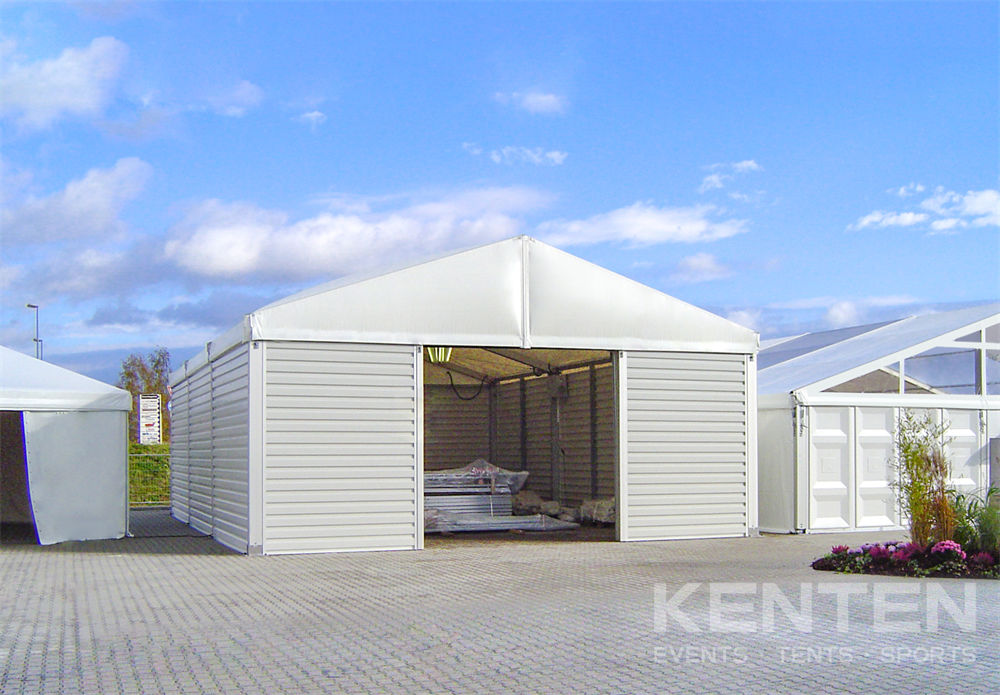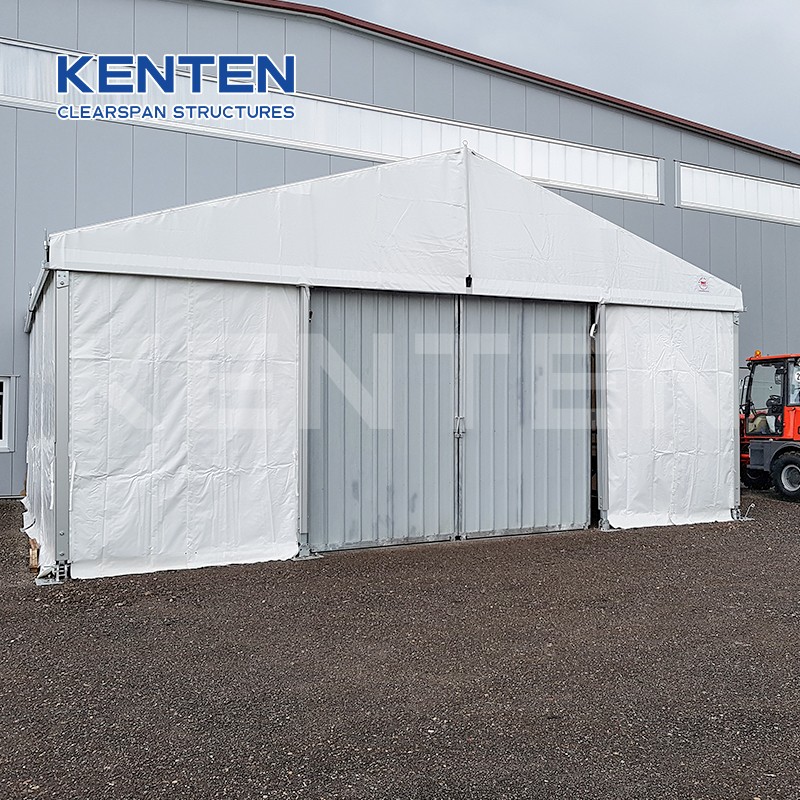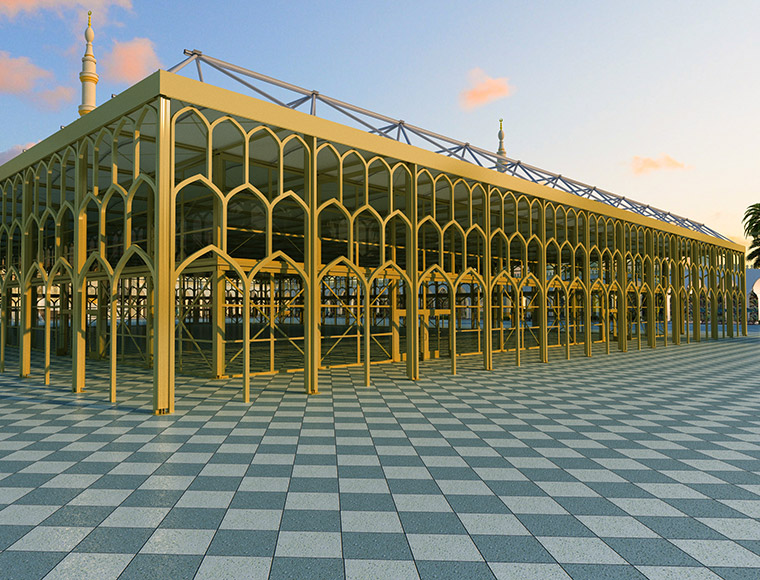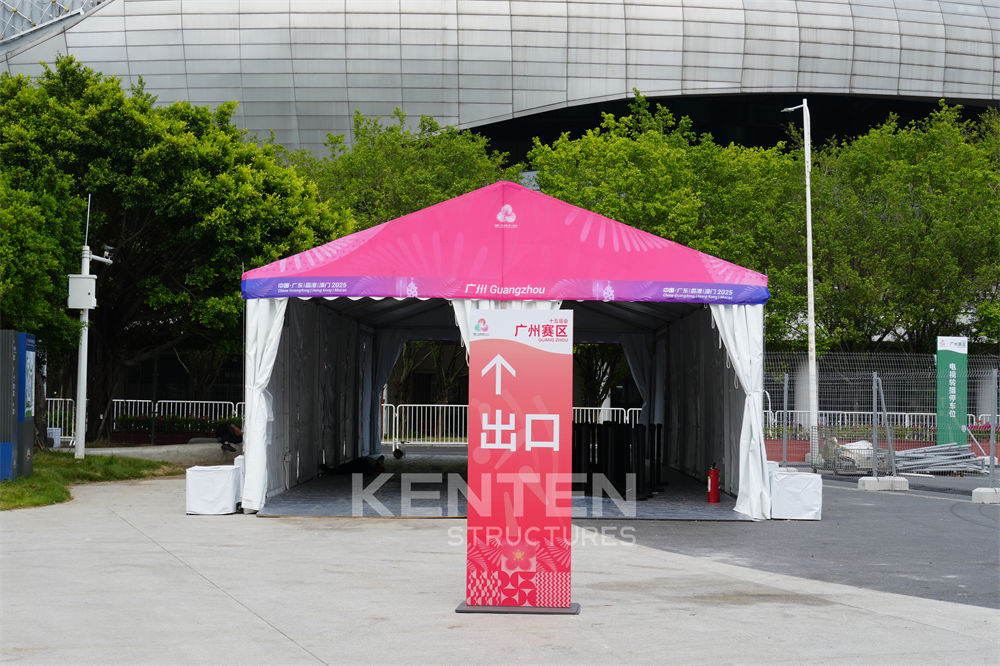



wall of a storage tent
1. Confirm core needs
First, clarify the characteristics of the stored items (such as whether they need insulation and moisture resistance), the usage cycle and budget constraints. For example, temperature-sensitive goods need to give priority to insulation performance, while short-term storage can focus on cost-effectiveness.
2. Wall material selection
- PVC tarpaulin: the mainstream choice in the market (accounting for more than 80%), with waterproof/sunscreen/flame-retardant properties, and the best cost-effectiveness. Suitable for conventional warehousing, and can be enhanced by thickening (such as 850g/m² specification) to enhance durability.
- Double-layer composite panel: Using special composite materials to provide active thermal management:
✓ Double-layer panel structure reduces steam loss by 30%, significantly saving energy
✓ Effectively blocks external temperature and humidity changes to maintain a stable cargo storage environment
- Sandwich Panel: High-end sealing solution, suitable for high-value item storage:


3. Installation and stability points
- The foundation fixing method directly affects the wall stability: concrete anchors are 40% more wind-resistant than gravity fixing
- Modular walls should give priority to pre-installed connectors to reduce the difficulty of on-site assembly

Designed for both temporary and semi-permanent use, this structure offers a balance between durability, aesthetics, and space efficiency — making it ideal for exhibitions, corporate events, sports pavilions, and hospitality lounges.

Get ready for Big 5 Global 2025, happening 24–27 November at the Dubai World Trade Centre!

At KENTEN, we specialize in temporary and semi-permanent aluminum alloy structures designed specifically for sports venues, from local tournaments to international championships.